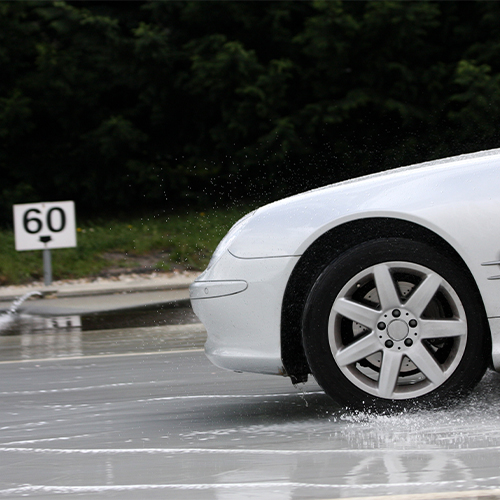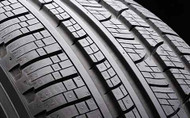All You Need to Know About Tire Siping
Posted by Agota Szabo on Jul 7th 2022
When you talk about tire siping, you can either mean the tread sipes of a tire footprint or the process of siping your tires. Today, we will take a look at the latter one. Let's jump right into it!
What Is Tire Siping?
Tire sipes are thin slits located across the tire's surface area. They increase the tire's road-gripping power, improve traction on wet and icy roads, boost controllability, and often decrease road noise. In other words, the number of sipes on the footprint will determine the tire performance.

On the other hand, tire siping is the process of cutting the sipes into the tread area of a tire. While tire siping is mostly done for racing vehicles, many everyday drivers would also prefer this option. But, it is a good idea?
Let's take a look at the pros and cons of the tire siping process and its aftermath.
The Benefits of Tire Siping
Improved Traction
The main benefit of the tire tread being covered with thin slits is that they enhance traction in harsh weather conditions. This ensures better overall performance on snow and ice.
It results in measurable improvements in the tire's ability to establish a strong grip even on a slippery surface. This is why tire manufacturers make sure that winter tires have dense siping.
Maximizes Braking Power
According to research, the tire's braking power peaks right before it loses traction. It gets to the point when depending on the driving speed, the tire either reaches a halt or starts slipping faster.

The higher the tire sipe density, the more it is going to take for the tire to reach the peak of its braking power. This only demonstrates how important it is to have detailed tread blocks if you want a stronger braking capability.
Reduces Noise Levels
Due to the tire sipes, the tread becomes better at absorbing impacts on various road surfaces. With proper siping, you can drive through a rough or coarse surface while experiencing fewer vibrations and noise.
The sipes basically boost the tire's micro-flexibility, which is of crucial importance for a smooth ride. Touring tires are also designed with specific siping patterns to ensure a quiet and comfortable drive.

It Results in Longer Tire Life
Another advantage of siped tires is that they last longer. The sipes, especially when they are 3D sipes, stabilize the tire footprint. This helps to evenly circulate driving pressure, effectively avoiding pressure accumulation along the tread area.
Therefore, footprints that feature sipes and grooves manage to prevent premature and irregular wear formations. Apart from the better traction they provide, they guarantee the tire's even wear in the long run.
But, this is not true for aftermarket siping. If you decide to have your tires siped, not only will you lose any warranty associated with the tire, but you will significantly shorten its service life.
How to Sipe Your Own Tires?
In order to safely sipe your own tires, without damaging them, you will need a tire siper. Shops also sell these tools online, offered in different versions - some more professional than others. At-home tire siping tools are easy to use. They feature sharp blades that you drag across the rubber area, cutting thin slits into the tread blocks.
However, DIY-ing this process can be dangerous. Let's see why.
Why is Aftermarket Tire Siping a Bad Idea?
You could sipe your tires at home whenever you want to or get a mechanic to do it for you. But is it actually a good idea? First off, if you do so, you can say goodbye to your warranty right away. You won't be able to get a new set of tires in case something unexpected happens with them.

Aftermarket siping is common practice among professional racers, yet it's not safe for everyday roads. If you feel like you need some extra gripping edges on the asphalt, then what you really need is a set of new tires. Those hand-made sipes are not going to help you out when your tire is about to expire.
It is also risky because those thin slits are going to reduce your surface grip during the summer. The high heat will have an adverse effect on your grip and tread wear as well.
Is Siping Tires even Legal?
Siping tires is illegal in many states, meaning that only manufacturers are allowed to do it on new tires. Tire tread patterns have to comply with various requirements set by the Department of Transportation.
According to them, tires that are siped after purchase are dangerous. Siping your tire comes with various benefits but it has some serious downsides as well. We recommend you stick to those models that come siped as new for your own driving safety.
Frequently Asked Questions
Should I Get My Tires Siped?
Siping makes a lot of sense for racing performance tires, although experts don't recommend it for city or highway driving. Getting a mechanic to sipe your tires or doing it at home is illegal in many states. It is dangerous as well, as it shortens tread life and reduces grip in hot temperatures.
Does Tire Siping Increase Traction?
Tire siping increases traction and shortens the tire's braking distances as well. More often than not, the whole point of siping is to boost the tire's snow and ice-biting ability. After the siping process, more biting edges that grip the road surface populate the tire tread.
















